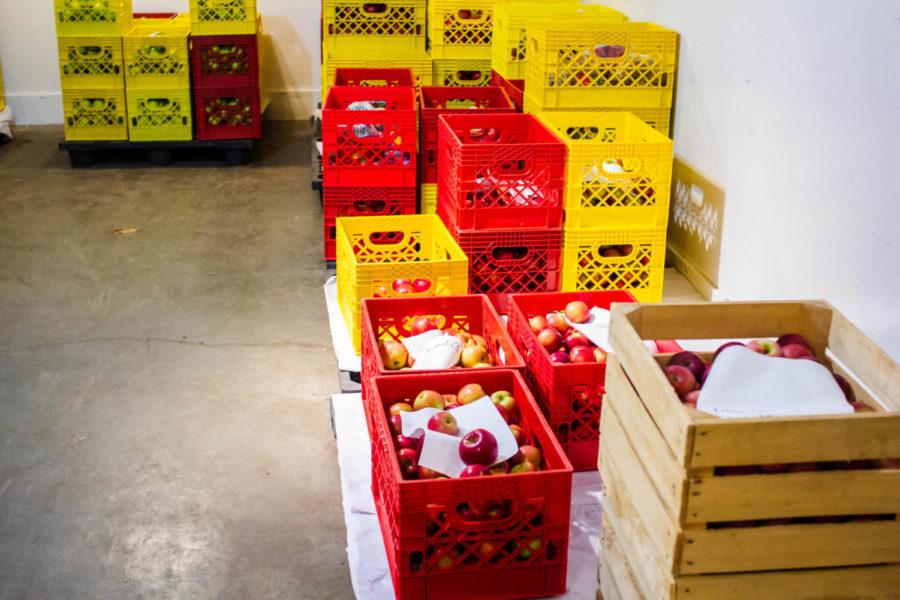Horticulture Research Station sells produce to staff and students
Garrett Heyd/ Iowa State Daily
Apples sit in crates in the coolers after picking at the Horticulture Research Farm on Nov. 5.
November 5, 2019
Iowa State students have the opportunity each week to purchase fresh produce grown at the Horticulture Research Station, located north of campus.
Students at Iowa State get food from many places, such as dining centers, cafes and convenience stores. Students may not know that every week, fresh produce is available for sale.
Customers can place an order online every Thursday until noon and pick up their order between 11:30 a.m. and 1:30 p.m. Friday outside of the Harl Commons at Curtiss Hall.
This concept of selling produce is the result of a project carried out by Azucena Castillo, senior in agronomy. She began working on the farm at the Horticulture Research Station and later developed a business.
“Originally I just started working at the farm and they offered me this opportunity to have this student plot,” Castillo said. “Basically I got to choose what I wanted to grow and plant. I took care of it all summer and then when it [became] available, we sold it all here.”
Nicholas Howell, superintendent of the research station, said along with students growing produce, researchers also do all kinds of studies on the farm.
“We have an organic practices research project where they are using a special kind of netting to exclude insects so that you don’t have to spray,” Howell said. “We have a project involving peppers where they are looking at biodegradable plastic mulch. We’ve had a sweet potato project where they are looking at nutritional requirements.”
Howell said once data is collected from the experiments, the crops that were produced are turned over to the farm. They are sold and profits supplement the budget of the farm.
One way the farm sells these crops is through their online webstore. Howell said this not only allows students to be a part of the growing and harvesting process, but also the marketing process.
Marketing crops is exactly what Castillo has done with her project, selling the farm’s produce on campus. She said one of her favorite parts of the business is the preparation before sales. She said she worked on the preparation process this summer before she had the obligation of classes.
“During the summer, I’d go to the field, harvest what needed to be harvested, and then run it through the produce washer or wash it myself and then bag it,” Castillo said. “It’s a very busy day because we do it all in one day — the day before the sale.”
Sales vary during different parts of the year, and some times are busier than others. Howell said in the fall season, there are particular crops that customers seek out.
“[The most popular is] apples, for sure,” Howell said. “We are having a good time selling sweet potatoes right now. As stuff comes into season, people are kind of waiting for it and there’s always a huge interest as soon as it’s offered.”
As Castillo stood outside of Curtiss selling this seasonal produce, she said she reflected on why she enjoys what she does.
“For me, the best part about this whole learning experience was seeing [the plants] planted and then seeing it on someone’s table,” Castillo said. “In agronomy, you don’t always get to see the final product.”
Anyone who is interested in purchasing produce from the Horticulture Research Station can visit the website to place an order.

















